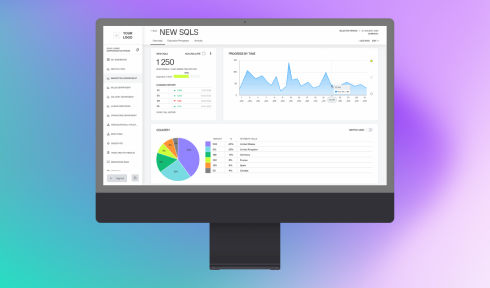Read the 1st part here
This article is a continuation of my previous article and goes deeper into the key elements of building a successful growth and business development strategy.
How to Define, Set, and Achieve Goals
The importance of a goal cannot be overstated. Success is impossible without a specific, clear, and precise goal.
Goals are conventionally divided into three types: long-term (with an attainability of 60%), medium-term (with an attainability of 70%), and short-term (with an attainability of 80%). The short-term goal is the plan that you develop along with the owner of the category of improvement (COI). Imagine that you’re moving from point “A” to point “B”, where “A” is where you are and “B” is where you need to go. “B” will be your goal to be achieved.
The most important skill in organizational management is to measure everything: where you are now, what you want, and when you should achieve it. The business owner’s task is to create a measurement system; start from point “A” where you are now and evaluate where you were at this time a year ago. Once you’ve figured out what needs to be improved and who will do it, set a goal and mark point “B” on your roadmap to success. This rule is not only for big goals – making a huge profit or buying a house on the coast – but also for small, daily tasks. Remember; creating a scale and measurement system is the responsibility of the business owner, understand the importance of this step and do not hesitate to take it.
If we consider sales, of course, we want to measure it. However, to measure it properly, we need to also consider the effect that quality of service plays in the overall results. Quality of service is a key operational indicator because if it’s done well, sales will reflect that in high numbers. You cannot measure the result (sales) properly if at the same time you ignore the cause (service).
Use a 10-point scale and ask your customers to rate your service from 0 to 10, where 0 is the worst service of all and 10 is the best. Or, use a 100%-scale. Setting up scales is an especially useful tactic for getting feedback from new customers.
For example, let’s pretend, based on the results of your interviews, you get an average of 62%. This is your point “A” – where you are now. Analyze the answers: someone put 40%, someone 90%, someone 100%. Out of all of the answers, which rating were there more of? Let it be 90%. This is your point “B” – what you need to strive for, and you, as a business owner, set this goal for the owner of the COI.
Setting a goal is not the end. Mapping out and controlling the process is necessary. Keep the goal in mind and under review at all times, analyze (what has been done to reach point “B” in a set period of time), plan (what needs to be done to close the distance to point “B” in a set period of time), and most importantly, the secret here is to focus.
The business owner should always be focused on the goal, and teach their team to do the same – to be involved, concentrated, and active. Basically, your brain is your computer, and if it’s not loaded with tasks, it’ll sit idly. Therefore, it’s so important to constantly repeat to yourself and the team “goal-goal-goal”. Constant stimulation of the brain makes it generate ideas and look for solutions.
Do your best to analyze your failures. Let’s imagine that you have a low service rating of 40%. With the owner of the COI, figure out why, where the problem comes into play, and how it can be fixed. Successful projects are carefully thought out. Evaluate both your successful projects and your not so successful projects to establish clear reasons for both results. Constant problem solving will stimulate your computer brain, contributing to its development until you acquire useful skills like the ability to solve anything.
Mastering your brain is a massive help to the implementation and execution of successful projects. A brain that’s full of thought-provoking ideas and pools of information backed by a desire to win and succeed, leads to solved problems and achieved goals.

Only Work with Facts: Draw On SCCTI
Always start with measurements, it’s a sign of professionalism for any business owner. Yes, it can take a lot of time and resources to find relevant facts and figures but they are also key indicators and need to be defined and evaluated.
Your first and most important fact is point “A”, where you’re starting from, while SCCTI is your tool for getting to point “B”. SCCTI stands for Solid, Complete, Comparative, Timely, Information, however, it can also be supplemented with three more classifications – Clear, Convenient, United.
Let’s take a closer look at the acronym and break it down:
-
-
- Solid – is reliable and true, without errors.
- Complete – it gives you a 360-degree view of your business.
- Comparative – it contains indicators that show change (data from last week/last month).
- Timely – is done in real-time, it takes into account what was done today, not just two weeks ago.
- Clear – it’s neat in visualization, pleasing to the eye.
- Convenient – it’s easy to understand and sort through.
- United – is shown to everyone in the same way.
-
SCCTI is the foundation of your business. Talent, charisma, and the ability to talk a good game will not help build a truly strong and powerful business. This is just a beginning, but the real game and mastering begins when the numbers come into play; measurement is the basis for success.
Possession of information, control of data, and regular work with facts lead to constant and stable growth and development. The four main elements of information are like the four corners of your foundation: it does not contain errors (solid), all data is collected – including all KSFs (complete), contains data for previous periods (comparative), everything is taken into account up to the current moment (timely). With this data, you can already start analyzing and developing an improvement plan for each category.
However, if all these numbers are piled up in a complex table, it’ll take you more time to figure it out than to analyze it directly. Therefore, visualization (clear) is also an important element of working with information. Moreover, it should be convenient for you to work with: navigation, sorting, and searching are simple elements that you can do without, but everything is much better when they’re present. And finally, having information available to needed parties is crucial to streamlined workflows and business success.
A clear vision of your goal and a clear starting point, backed by SCCTI, allows you to develop an effective plan to drive towards victory – towards your global business goal. The key sequence of actions here is very simple: a very strong desire, choosing a niche, recruiting and building a team, and implementing the SCCTI principles. This is followed by the realization that victory is not guaranteed, there is also a chance to lose. This encourages you to constantly move, make a leap towards victory, maintain concentration, and focus on the goal.
Related Experience

Action: How Many Action Points Have You Covered to Get to Where You Are
Management is exercised through meetings. To excel, stick to what’s been agreed upon and approved and make sure others are reporting their actions. This approach will keep your team focused on the right target.
Another crucial aspect is to think of what has been achieved over time and thoroughly analyze it rather than what you want to do tomorrow. Only real-time empirical data will help you come up with the right solutions.
Getting back to the mindful management style, you should remember that it’s built on three pillars: 1) philosophy, 2) leadership skills, and 3) management system. It also comprises 10 elements of which action is the core and driving force. Here, we revisit the concept of client-centricity: they pay us for effective actions which we produce and thereby improve their business value. By contrast, meetings, plans, and reports have a secondary value because they remain invisible to clients throughout production. These elements only serve as a foundation for our actions. Hence, action is similar to a shot, whereas the rest is the process of aiming before this shot is made. Whatever strategy or activity you undertake in business, make sure the final point is a shot that gives you a desirable outcome. When you have more focused goals and execute better than your competitors, clients will favor your company first. For that reason, you should focus on teaching your team how to plan and execute.
Analyze: Clarify Whether Your Outcome Is Bad or Good for Your Business
Analysis is the most intricate element in management. It is essential to have the skill of reading figures. At the start, you should know WHAT you want to improve, WHO will be responsible for it, and WHERE this improvement will lead you. You should examine the causes and keep thinking until you can clearly answer: Was it bad or good? Why did it happen?
Analysis is based on the idea of digging deeper to uncover the understanding of where things are going and whether you will be happy with the ultimate result. We need this kind of ongoing analysis to keep track of a management system’s performance. It’s impossible to make good decisions without proper analysis before decision-making.
Every business’s lifecycle consists of three phases: Results – Analysis – Action. SCCTI (solid, complete, comparative, timely information) is the result of your analysis. It’s essential to work with the latest and relevant data when analyzing your business performance or making any business-related decision. You should make sure that you have all the important data at your disposal. The digital world changes fast and unless you are capable of extracting and using up-to-date data, your chances of quick and sound decision-making and management aren’t promising.
The analysis itself also includes three phases: 1) assessment, 2) explanation, and 3) recommendations. For example, is a revenue of $2M in January a good or bad metric for your business?
You might say that “It’s below expectations (assessment) because the revenue decreased by 26% against last year (explanation)”, and it’s good that you have some predetermined expectations. But what’s important is that you should also provide some recommendations in response to this situation. You should plan some actions that will help fix this issue. For example, you might propose: “Set a meeting with John and try selling him our services. We haven’t contacted him for 2 months.” This is a good recommendation that should be followed by action when you wake up the next day and give John a visit to try and convince him to buy something from you. This example of Results – Analysis – Action underlies the principle of effective business management.
If you’re looking for a reliable tool to improve your decision-making process, please take a look at Computools’s Information Management System Solutions Kit or consult our experts for the enhancements your company needs by contacting us at info@computools.com.

Computools
Software Solutions
Computools is a digital consulting and software development company that delivers innovative solutions to help businesses unlock tomorrow.









“Computools was selected through an RFP process. They were shortlisted and selected from between 5 other suppliers. Computools has worked thoroughly and timely to solve all security issues and launch as agreed. Their expertise is impressive.”